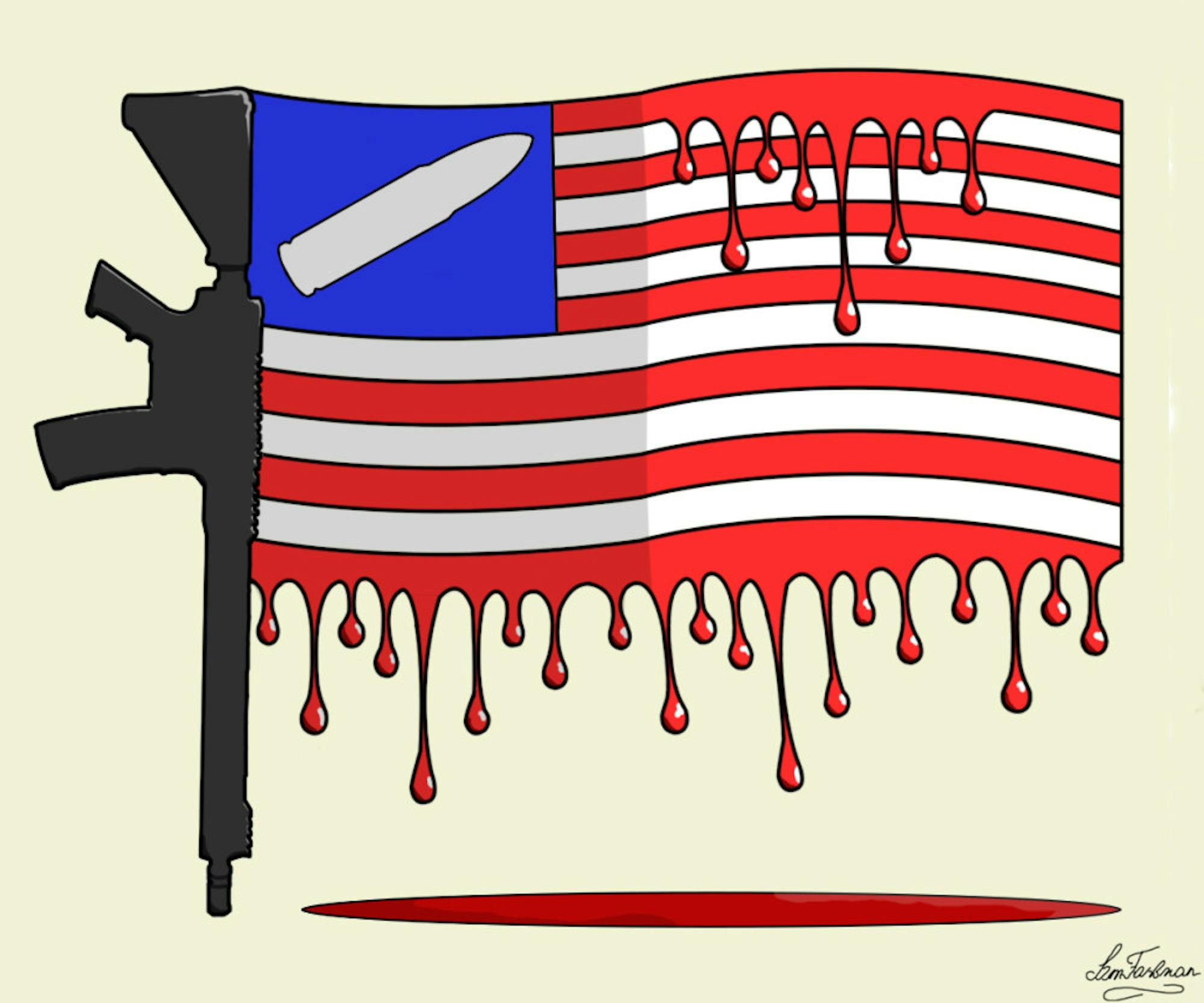Content warning: This article discusses suicide, gun violence and domestic violence.
Gun homicides take the lives of too many Americans each year.On April 8, President Joe Biden called gun violence in America an “epidemic and an international embarrassment.” This statement was released following several mass shootings, with eight dead in Atlanta, Ga., 10 dead in Boulder, Colo. and four dead in Orange, Calif., among others. Mass shootings and school shootings have been capturing the nation’s attention and horror for years, yet little has changed. These public incidents are only the tip of the iceberg. Approximately 36% of gun deaths are homicides, 61% are suicides, 1.3% are accidents and 1.4% are police shootings.Mass shootings, while horrific and tragic, are the visible symptoms of a much larger problem, representing about 0.2% of gun deaths.
America's gun homicide rate is 25 times those of other high-income countries; about 58% of American adults have been touched by gun violence, either directly or through someone they love.Gun access also heightens the threat to women who face domestic violence.Approximately 4.5 million American women alive today have been threatened with a gun by a partner, and women in the U.S. are approximately 21 times more likely to be killed with a gun than women in other high income countries.
Additionally, gun violence disproportionately affects low income and Black communities. The leading cause of death for Black teenagers and children in America is gun violence. An unarmed Black man is also five times more likely to be shot and killed by police than an unarmed white man, underscoring how gun violence intersects with systemic racism.
However, the majority of gun deaths do not stem from someone turning a gun on someone else. As noted, 61% of gun deaths are suicides, and 51% of suicides involve a gun. Research shows that, contrary to common media narratives, suicides are very rarely carefully planned, and are most often attempted on impulse. Because of this, many people who survive a suicide attempt and receive help afterwards will not end up dying by suicide. However, a gunshot is much harder to survive than many other types of attempts. The risk of death by suicide becomes three times more likely when an individual has access to a gun, which explains, in part, why the United States also has the highest suicide rate among high-income countries.
Gun violence is endemic in America, warranting Biden’s description of it as a “national embarrassment.” Research has shown that the high rates of mass shootings and homicide in America are not reflective of a more violent society.We don’t have higher rates of crime, violence or mental health struggles; guns make these incidents more deadly. Other countries, such as the United Kingdom, Australia and New Zealand, instituted strict gun control laws after experiencing mass shootings, and currently have far lower homicide rates than we do.Despite common claims that ownership of firearms protects us, these numerous precedents show that countries are, in fact, safer when people have lower levels of access to firearms. We have experienced innumerable mass shootings, including many at schools. We have watched children die. And yet, we have made few changes. Our societal belief in our right to own guns to maintain our safety has blinded us to the cost.
Biden has announced several measures his administration is taking to address this problem. These actions include investing in evidence-based community violence interventions, curbing the spread of “ghost guns,” or easily assembled kits with gun components that do not have serial numbers and cannot be traced, and promoting the passage of the Violence Against Women Act. The Justice Department will also be publishing model “red flag” legislation for states, which would allow law enforcement or family members to petition for court orders temporarily preventing people who represent a danger to themselves or others from accessing firearms. Realistically, however, the Biden administration cannot change much without Congress and state legislatures. Though the National Rifle Association’s influence has weakened due to its recent legal and financial issues, gun legislation would still require a 60-vote majority in the Senate, which seems unattainable in the evenly split chamber. Guns are a partisan issue, but they shouldn’t be; they affect Americans of all political affiliations and identities.
We must make it clear to our representatives in Congress and our state legislatures that this issue is important, and that we must enact change now. Many legislators repeatedly send prayers and share poignant rhetoric, but do nothing to address the issue. Even as some lawmakers and lobbyists attempt to deflect blame and frame gun violence as a series of isolated, individual tragedies, we must remember that the problem is an institutional one. The Giffords Law Center rates the following ten states as having the worst gun death rates: South Carolina, Alabama, Mississippi, Louisiana, Arkansas, Missouri, Montana, Wyoming, New Mexico and Alaska.However, gun violence pervades our entire country; many higher-ranked states still witness startling gun death rates and require significant legislative reforms. We must urge our representatives to support gun control legislation and protect the lives of their constituents. America’s obsession with guns has taken and continues to take far too many lives. Let’s put the lives of Americans first.






